
Huelva is a municipality of Spain and the capital of the province of Huelva, in the autonomous community of Andalusia. Located in the southwest of the Iberian Peninsula, it sits between the estuaries of the Odiel and Tinto rivers on the Atlantic coast of the Gulf of Cádiz. According to the 2010 census, the city had a population of 149,410.

Castilleja de la Cuesta is a town and municipality in the province of Seville, in the autonomous community of Andalusia, Spain.

Evaristo Márquez Contreras was a Spanish sculptor.

The Diocese of Huelva is a Latin Church diocese of the Catholic Church located in south-western Spain, and its borders coincide with those of the civil province of Huelva, part of the autonomous community of Andalusia. The diocese forms part of the Ecclesiastical Province of Seville, and is thus suffragan to the Archdiocese of Seville.
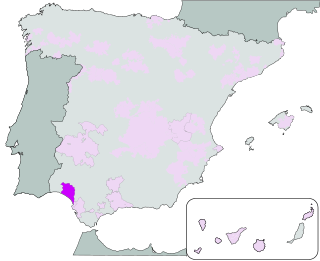
Condado de Huelva is a Spanish Denominación de Origen Protegida (DOP) for wines located in the south-east of the province of Huelva. The wines, known as the Wines of the Discovery of America, are produced there.

Rociana del Condado is a town located in the province of Huelva, Andalusia, Spain.

The Spanish coup of July 1936 was a military uprising that was intended to overthrow the Spanish Second Republic but precipitated the Spanish Civil War; Nationalists fought against Republicans for control of Spain. The coup was organized for 18 July 1936, although it started the previous day in Spanish Morocco. Instead of resulting in a prompt transfer of power, the coup split control of the Spanish military and territory roughly in half. The resulting civil war ultimately led to the establishment of a nationalist regime under Francisco Franco, who became ruler of Spain as caudillo.
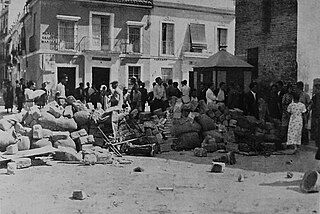
The July 1936 military uprising in Seville was part of a nationwide coup d'état in Spain, launched by part of the Spanish army. It was supposed to topple local Republican administrations in Seville and western Andalusia. The uprising commenced on 18 July 1936, led by general Gonzalo Queipo de Llano. The rebels overpowered regional military command and some key units without a shot being fired, but were offered resistance by Guardia de Asalto, subordinated to the civil governor José María Varela; it was overcome later in the day. The days of 19–22 July were mostly about seizing the districts of Triana, Macarena and San Julián; they were controlled by revolutionary trade unions and radical left-wing militias. On 23 July Queipo was fully in control. The successful coup in Seville proved of vital importance for the rebels nationwide; the insurgent pocket in south-western Andalusia enabled the shift of the Army of Africa to the peninsula, and then its rapid advance towards Madrid.

The Battle of Guadarrama, also known as the Battle of Somosierra, was a battle that occurred in the Sierra de Guadarrama during the Spanish Civil War from 22 July to 15 September 1936.
The Córdoba offensive was a failed Republican offensive against the Nationalist held city of Cordoba. It took place from 19 to 22 August 1936 during the Spanish Civil War.
The siege of Santuario de Nuestra Señora de la Cabeza took place from 14 September 1936 to 1 May 1937 in Andújar, Jaén, during the Spanish Civil War. The Republican army surrounded around 1,200 rebel civil guards and falangists who supported the Nationalists and forced them to surrender after a protracted offensive.

Gonzalo Queipo de Llano y Sierra was a Spanish Army general. He distinguished himself quickly in his career, fighting in Cuba and Morocco, later becoming outspoken about military and political figures which led to his imprisonment, removal from posts and involvement in plots against Spanish governments. He was a Nationalist military leader during the Spanish Civil War under Francisco Franco, gaining the soubriquet "El general de la radio" for his threats and explicitness on air. Under his control of southern Spain, tens of thousands of Spaniards perished as part of the Nationalists' White Terror. In his post-war roles he was effectively sidelined by Franco.
The Asturian Miners Column was a popular militia that fought for the Republicans during the Spanish Civil War in the Province of León. On the night of 18 July 1936, a special train full of miners left Asturias for Madrid, in order to defend the constitutional order. The train, after passing through León, returned to Asturias from Benavente on 21 July. A part of the mining column participated in the defense of Ponferrada.
José Fernández de Villa-Abrille y Calivara was a Spanish general in charge of the Seville garrison who capitulated to rebel forces at the beginning of the Spanish Civil War.
Manuel Díaz Criado was a Spanish infantry officer. With a reputation as a brutal sadist, he was during the Spanish Civil War responsible for the arrest, sexual abuse, torture and execution of thousands of people in the regions of Andalucia and Extremadura who opposed the Nationalist military uprising. The crimes frequently extended to the relatives and the associates of those targeted.
José Cuesta Monereo was a senior Spanish army officer, regarded as the planner of the Spanish coup of July 1936 in Seville at the beginning of the Spanish Civil War, and thereafter other areas, initially under the command of general Gonzalo Queipo de Llano. The plans resulted in the abuse, torture and murder of thousands of local people.
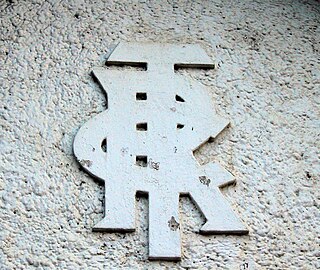
The Rio Tinto Company Limited (RTC) was one of the founding companies of the Rio Tinto Group conglomerate, which was responsible of the exploitation of the Riotinto-Nerva mining basin in Minas de Riotinto between 1873 and 1954.
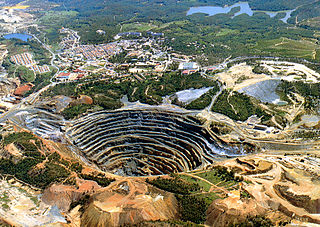
The Riotinto-Nerva mining basin is a Spanish mining area located in the northeast of the province of Huelva (Andalusia), which has its main population centers in the municipalities of El Campillo, Minas de Riotinto and Nerva, in the region of the Cuenca Minera. It is also part of the Iberian Pyrite Belt.

The Andalusia Campaign refers to the set of military operations that took place in Andalusia between the nationalist and republican forces, during the first months of the Spanish Civil War.
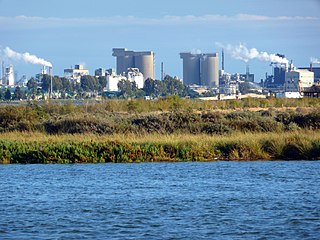
The Chemical Park of Promotion and Development of Huelva, also known simply as the Chemical Park of Huelva or Chemical Pole of Huelva, is the name given to the group of facilities and infrastructures belonging to the petrochemical industry sector located in the province of Huelva (Spain), south of the provincial capital's urban center. The industrial complex was started up during the second half of the 20th century, covering various branches of production.














